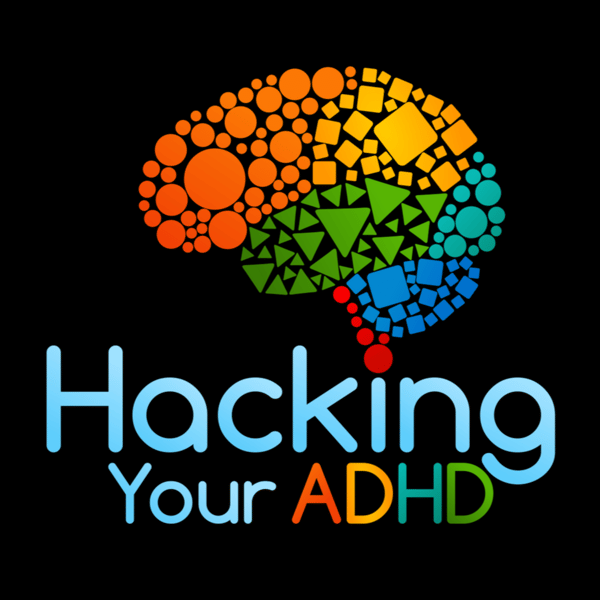Nine Parts of a Transition with Brendan Mahan
Hacking Your ADHD
William Curb
4.8 • 702 Ratings
🗓️ 22 January 2024
⏱️ 33 minutes
🧾️ Download transcript
Summary
Hey Team!
Today we’ve got a real treat, I’m talking to one of my favorite people, Brendan Mahan of the ADHD Essentials Podcast. I last had Brendan on to talk about the Wall of Awful, his model of how everything that we do can be made harder from repeated failure. It’s a great episode and I’ll link that in the show notes if you want to get caught up on that.
I asked Brendan back on the show because while we were at the International ADHD Conference I got talking to him about a different model of his and that’s the 9 parts of a transition. Now I understand that the idea of 9 parts of a transition can seem a bit daunting, but what I think the most salient point of this episode is, is that transitions are far more than what we initially think they are. Because of this we often underestimate what goes into making those transitions. But I’m getting ahead of myself here, in our conversation today, Brendan breaks down this model and we also explore strategies for managing distractions and understanding our emotional states.
Checkout Brendan's podcast ADHD Essentials
Feel free to ask me a question on my Contact Page
Find the full show note at HackingYourADHD.com/167
This Episode's Top Tips
- Understand that each transition includes multiple components, not just the physical move from one task to another. We need to consider not just the stopping, moving, and starting components of a transition, but also the physical, cognitive, and emotional aspects as well.
- And just to hammer this piece home, we need to recognize and address the emotional aspects of transitions, as they play a significant role in the process. This is especially important when we’re switching contexts, like going from work to family stuff.
- It’s also important for us to understand that sometimes not all the parts of a transition are going to be all that impactful - some parts of the transition are going to be easy. But when we do struggle with moving onto the next thing it is important that we can step back and try and identify what’s going on and where we’re finding that resistance.
Transcript
Click on a timestamp to play from that location
| 0:00.0 | Welcome to Hacking Your ADHD. |
| 0:06.0 | I'm your host, William Kerb, and I have ADHD. |
| 0:09.0 | On this podcast, I dig into the tools, tactics, and best practices to help you work with your ADHD brain. |
| 0:16.0 | Hey, team, today we've got a real treat. |
| 0:18.0 | I'm talking with one of my favorite people, Brendan Mahan, of the ADHD Essentials podcast. |
| 0:23.1 | I last had Brendan on to talk about the Wall of Awful, |
| 0:25.6 | his model of how everything that we do is made harder from repeated failures. |
| 0:29.7 | And trust me, that's a concept that's worth learning about. |
| 0:32.5 | So it's a great episode, and I'll link it into the show notes if you want to get caught up on that. |
| 0:36.2 | But onto this episode, I asked Brandon it into the show notes if you want to get caught up on that. But on to this episode, I asked Brandon back onto the show because while we're at the International |
| 0:40.3 | ADHD Conference, I got to talk to him about a different model of his, and that's the |
| 0:45.3 | nine parts of a transition. |
| 0:46.3 | Now, I understand that the idea of nine parts of a transition can seem a bit daunting, but |
| 0:51.3 | what I think the most salient point of this episode is, is that transitions |
| 0:55.1 | are far more than what we initially think they are. Because of this, we often underestimate |
| 0:59.6 | what goes into making those transitions. But I'm getting ahead of myself here. In our conversation |
| 1:04.5 | today, Brendan breaks down this model and we explore strategies for managing distraction and understanding |
| 1:09.5 | our emotional states, and of course, |
| 1:11.4 | what goes into a transition. If you'd like to follow along on the show notes page, you can find that |
| 1:15.5 | at hacking your ADHD.com slash 167. All right, keep on listening to find out how going from |
| 1:22.1 | A to B is more than just one step. |
| 1:33.3 | We're here to talk about the nine parts of her transition, which I'm sure most people say transition nine parts, that's way too many. I already have enough trouble with the one part |
... |
Please login to see the full transcript.
Disclaimer: The podcast and artwork embedded on this page are from William Curb, and are the property of its owner and not affiliated with or endorsed by Tapesearch.
Generated transcripts are the property of William Curb and are distributed freely under the Fair Use doctrine. Transcripts generated by Tapesearch are not guaranteed to be accurate.
Copyright © Tapesearch 2025.

